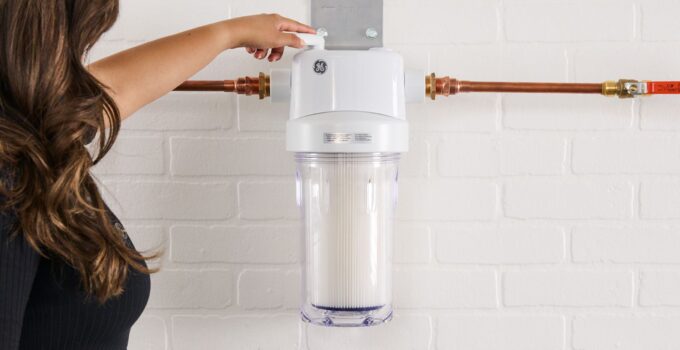In modern water purification, one method stands out for its efficiency and effectiveness – reverse osmosis water filtration. This intricate process, honed over decades of research and development, has revolutionised the acquisition of clean and pure water. Delve into the fascinating world of advanced filtration systems such as the reverse osmosis water filter that has transformed the quality of water supply.
Understanding the Essence of Reverse Osmosis
At the heart of the matter lies the principle of reverse osmosis, an ingenious technique that relies on semipermeable membranes to separate impurities from water. Imagine a super-fine mesh that captures even the tiniest particles, leaving only clear, refreshing water to pass through. This method removes visible debris and eliminates dissolved contaminants that may affect taste, odour, and even health.
A Multistage Journey
Reverse osmosis filtration is not a single-step process; it involves multiple stages to ensure thorough purification. The water journeys through various filters, each designed to target specific contaminants.
Suspended particles, chlorine, heavy metals, and even microorganisms are captured and removed, delivering spotless water. This comprehensive approach ensures that the output is safe for consumption and meets the stringent quality standards set by regulatory bodies.
The Role of Pre-Filtration
Source: forstafilters.com
Before the water reaches the core reverse osmosis membrane, it undergoes pre-filtration. This stage is vital as it prevents larger particles from clogging the delicate pores of the membrane. By removing sediments and more significant impurities, the pre-filtration step enhances the overall efficiency and lifespan of the filtration system.
This is a crucial aspect that contributes to the reliability and long-term performance of the system.
The Molecular Challenge
Considering the molecular scale of contaminants, reverse osmosis reveals its true prowess. The semipermeable membrane thwarts dissolved salts, minerals, and even harmful chemicals. The process relies on creating a pressure differential across the membrane, forcing water molecules from a region of higher concentration to move to one of lower concentration.
This selective permeation leaves behind most impurities, resulting in remarkably pure water on the other side.
Balancing Purity and Waste
Source: science.howstuffworks.com
While the reverse osmosis process is highly effective, it does generate a byproduct: concentrated wastewater containing the extracted impurities. This aspect prompts the need for efficient water management strategies, where some systems are designed to recycle and minimise wastage.
Advances in technology have led to improved recovery rates, reducing the overall environmental impact of reverse osmosis filtration systems.
The Quest for Optimal Performance
Achieving the utmost performance from a reverse osmosis water filter necessitates careful consideration of various factors. Water pressure, temperature, and even the source water quality play critical roles in determining the system’s efficiency.
Regular maintenance, including filter replacement and cleaning, ensures consistent results. Manufacturers often provide guidelines to help users maintain the system’s effectiveness and prolong its lifespan.
The Spectrum of Applications
These systems have entered diverse settings beyond residential use. From industrial processes that demand ultrapure water to desalination plants that convert seawater into freshwater, the adaptability of the reverse osmosis water filter is remarkable. Additionally, it has become a cornerstone in providing safe drinking water to remote areas and disaster-stricken regions, showcasing its humanitarian potential.
In conclusion, the world of water purification owes a significant debt to the intricate process of reverse osmosis filtration. With its ability to remove contaminants, this advanced system has become synonymous with purity and safety. As technology evolves, one can anticipate even more refined and efficient reverse osmosis filtration solutions that will further elevate the quality of the most precious resource – water.




